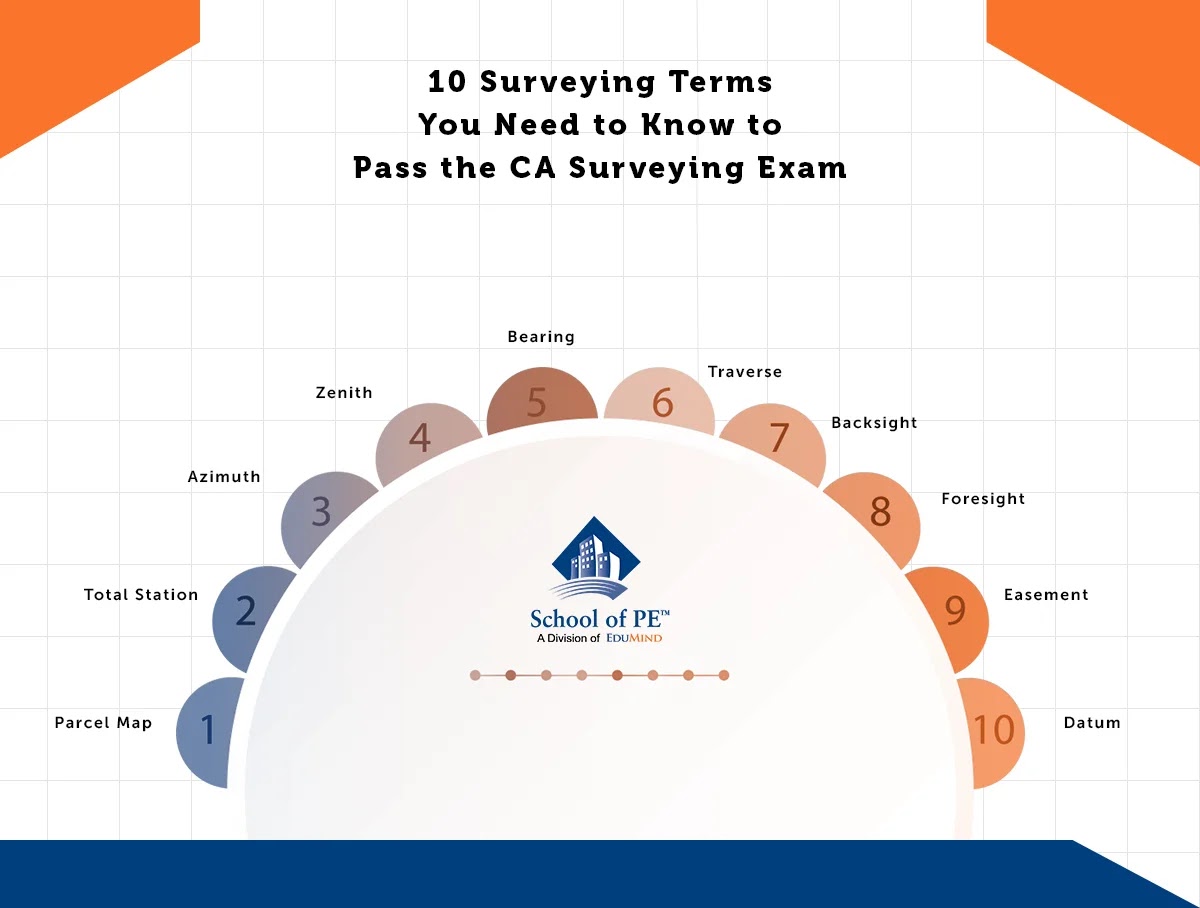Terms and definitions make up a HUGE part of the material on the exam. My #1 test strategy (OK, maybe #2 after getting a graphing calculator) is to bring a surveying dictionary into the exam. While there are so many terms to know, here are 10 you should memorize:
1. Parcel Map
A parcel map is a map that divides a large parcel into four or fewer parcels. Conversely, a subdivision map is a map that divides a large parcel into five or more parcels.
2. Total Station
A total station is the current industry standard for surveying equipment. It's classified as an electronic distancing measure (EDM), and it can also measure vertical and horizontal angles and record data. It typically requires two people to operate it, but there is a "robotic" total station that only needs one surveyor.
3. Azimuth
An azimuth measures horizontal angles (in 2D) from 0 to 360 degrees in a clockwise motion.
4. Zenith
A zenith measures vertical angles from 0 to 360 degrees in a clockwise motion, starting from the 12 o'clock position.
5. Bearing
A bearing measures angles, but only from 0 to 90 degrees. It is always relative to the north or south axis and is written in the form of N (or S) X Y' Z" E (or W). A back bearing (of a given bearing) is the opposite: S (or N) X Y' Z'' W (or E).
6. Traverse
A traverse is a plan view of the path a surveyor takes. If it starts and ends at the same point, it is considered as a closed traverse. Otherwise, it is an open traverse.

7. Backsight
The backsight is the vertical distance measurement from the benchmark to a known elevation during differential leveling.
8. Foresight
The foresight is the vertical distance measurement from the benchmark to an unknown location during differential leveling.
Terms 7 & 8 are related in the following equations: Elevation1 + Backsight - Foresight = Elevation2
9. Easement
An easement is technically defined as shared land determined by a legal document, which allows a non-property owner to use the property. You'll see this a lot with utilities. The easement must outline the following: purpose, who the easement is between, the width, the duration, and the location based on a rectangular coordinate system.
10. Datum
There are two national datums, which establish horizontal and vertical coordinates. NAD 83 (which was updated from NAD 27) governs horizontal datums. NAVD 88 (which was updated from NGVD 29) governs vertical datums.
School of PE offers comprehensive exam review courses for the CA Seismic and CA Surveying exams. Visit our website to register for a prep class that best fits your schedule.
No comments :
Post a Comment